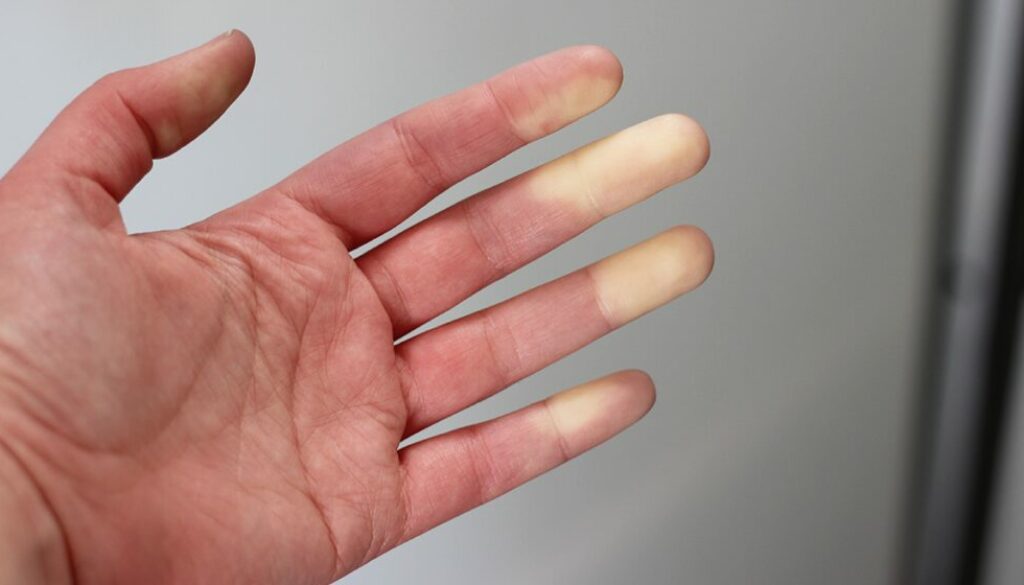Why do my Fingers Turn White in the Cold?
Do you ever notice one or several of your fingers turn white and go numb after getting into the cold ocean, a chilly pool or outside during the wintertime? That might be a sign you have Raynaud’s disease. CMC Rheumatologist, Dr. Erik Escuro explains, “Primary Raynaud’s phenomenon, also known as Raynaud’s disease, is when you have at least two colors change in your hands or feet with exposure to cold without an identifiable associated medical condition.”
This color change, and possible numbness or prickling sensation, happens because of Raynaud’s disease’s impact on your blood flow. It causes the smaller arteries that carry blood to the skin to tighten and limit the amount of blood flow.
The other type of Raynaud’s phenomenon is known as secondary Raynaud’s phenomenon. Dr. Escuro says, “This is when the skin discoloration with cold exposure is associated with an underlying medical condition (for example, lupus or rheumatoid arthritis) or medication (decongestants, ADHD medications, and some migraine medications).”
Symptoms
A classic presentation of Raynaud’s would be your fingers or toes turning pale white, then blue, then red with cold exposure. Other symptoms can include:
- Extremities feel cold, but are warm to the touch
- Numbness
- Stinging or prickly sensation upon warming
“There are other conditions, often related to smoking cigarettes, that can mimic Raynaud’s such as Buerger’s disease,” said Dr. Escuro with CMC Rheumatology,” It’s important that you bring up your symptoms with your health care provider to see whether you need further evaluation and treatment.
Prevention & Diagnosis
Young women between the ages of 15-30 years old are often the most at risk. Dr. Escuro explains, “Patients who have a systemic rheumatologic disease such as lupus or rheumatoid arthritis are at risk as well.”
If you are experiencing Raynaud’s symptoms, try your best to keep your hands warm during the colder months using gloves and hand warmers, and avoid situations that can lead to sudden drops in temperature. Additionally, smoking cessation can control symptoms. If this is not helping, contact your primary care provider or your CMC rheumatologist for other treatment options.
Rheumatology in Myrtle Beach
If you are experiencing symptoms, contact CMC Rheumatology. Rheumatic diseases can have a significant impact on your quality of life. If untreated, daily activities like walking, cooking, climbing stairs, and even preparing for your day can become the most difficult of tasks. Dr. Escuro of CMC Rheumatology shares with us who might benefit from seeing a Rheumatologist


